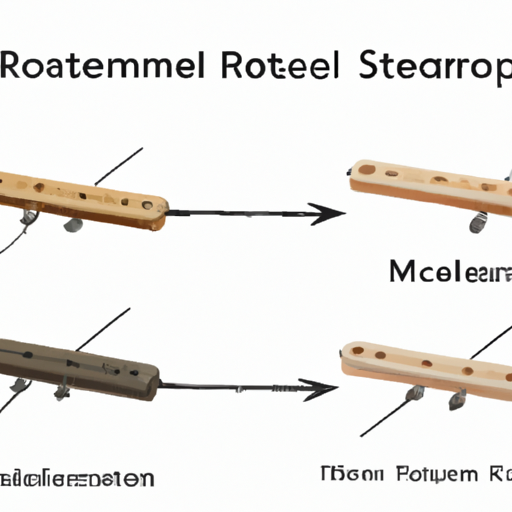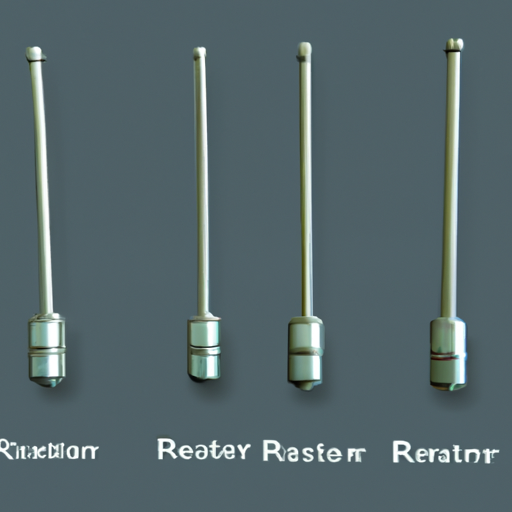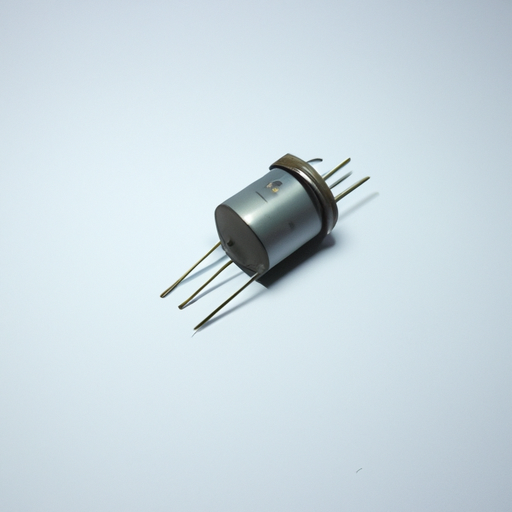The Latest Standard Resistor Specifications
I. Introduction
A. Definition of Resistors
Resistors are fundamental electronic components that limit the flow of electric current in a circuit. They are essential for controlling voltage and current levels, ensuring that electronic devices operate safely and effectively. Resistors come in various forms and specifications, each tailored for specific applications.
B. Importance of Resistor Specifications
Understanding resistor specifications is crucial for engineers, designers, and hobbyists alike. The specifications dictate how a resistor will perform in a circuit, influencing everything from power consumption to signal integrity. Choosing the right resistor can mean the difference between a successful project and one that fails to function as intended.
C. Overview of the Document's Purpose
This blog post aims to provide a comprehensive overview of the latest standard resistor specifications, including key parameters, industry standards, and emerging trends. By the end, readers will have a clearer understanding of how to select the right resistor for their needs and stay updated with the latest advancements in resistor technology.
II. Understanding Resistor Specifications
A. What are Resistor Specifications?
1. Definition and Importance
Resistor specifications refer to the detailed characteristics that define a resistor's performance in an electrical circuit. These specifications include resistance value, power rating, tolerance, temperature coefficient, and voltage rating. Understanding these parameters is essential for ensuring that a resistor will function correctly in its intended application.
2. Key Parameters
The key parameters of resistors include:
Resistance Value: Measured in ohms (Ω), this indicates how much the resistor opposes the flow of current.
Tolerance: This specifies how much the actual resistance can vary from the stated value, usually expressed as a percentage.
Power Rating: This indicates the maximum power the resistor can dissipate without being damaged, measured in watts (W).
Temperature Coefficient: This measures how much the resistance changes with temperature, expressed in parts per million per degree Celsius (ppm/°C).
Voltage Rating: This indicates the maximum voltage that can be applied across the resistor without causing failure.
B. Types of Resistors
1. Fixed Resistors
Fixed resistors have a constant resistance value and are the most commonly used type. They are available in various materials, including carbon, metal film, and wire-wound.
2. Variable Resistors
Variable resistors, such as potentiometers and rheostats, allow users to adjust the resistance value. They are often used in applications like volume controls and tuning circuits.
3. Specialty Resistors
Specialty resistors include thermistors, photoresistors, and varistors, each designed for specific applications, such as temperature sensing or voltage clamping.
III. Key Specifications of Resistors
A. Resistance Value
1. Units of Measurement (Ohms)
The resistance value is measured in ohms (Ω), with common values ranging from fractions of an ohm to several megaohms (MΩ). The choice of resistance value is critical for circuit design, as it directly affects current flow.
2. Tolerance Levels
Tolerance indicates the precision of the resistor's value. Common tolerance levels include ±1%, ±5%, and ±10%. For high-precision applications, resistors with lower tolerance levels, such as ±0.1%, are preferred.
B. Power Rating
1. Definition and Importance
The power rating of a resistor indicates the maximum amount of power it can safely dissipate without overheating. Exceeding this rating can lead to resistor failure, which may damage the circuit.
2. Common Power Ratings
Common power ratings for resistors include 1/8 W, 1/4 W, 1/2 W, 1 W, and higher. The choice of power rating depends on the application and the expected current flow.
C. Temperature Coefficient
1. Explanation of Temperature Coefficient
The temperature coefficient measures how much a resistor's resistance changes with temperature. A low temperature coefficient is desirable for applications requiring stable performance across varying temperatures.
2. Impact on Performance
Resistors with a high temperature coefficient can lead to significant performance variations in sensitive circuits, making it essential to select resistors with appropriate temperature characteristics for specific applications.
D. Voltage Rating
1. Definition and Importance
The voltage rating indicates the maximum voltage that can be applied across a resistor without causing breakdown or failure. Exceeding this rating can lead to catastrophic failure.
2. Common Voltage Ratings
Common voltage ratings for resistors range from 50V to several kilovolts (kV), depending on the application. High-voltage resistors are used in power electronics and industrial applications.
IV. Standard Resistor Specifications
A. Industry Standards
1. International Electrotechnical Commission (IEC)
The IEC sets international standards for electrical and electronic devices, including resistors. These standards ensure compatibility and safety across different regions and applications.
2. American National Standards Institute (ANSI)
ANSI develops standards for various industries in the United States, including specifications for resistors. Compliance with ANSI standards is often required for commercial products.
B. Commonly Used Resistor Standards
1. E12 and E24 Series
The E12 and E24 series are standard sets of preferred numbers for resistor values. The E12 series includes 12 values per decade, while the E24 series includes 24 values, providing a systematic approach to selecting resistor values.
2. E96 and E192 Series
For applications requiring higher precision, the E96 and E192 series offer 96 and 192 values per decade, respectively. These series are commonly used in high-precision circuits and instrumentation.
C. Recent Updates in Standards
1. Changes in Tolerance Levels
Recent updates in resistor standards have seen a shift towards tighter tolerance levels, reflecting the growing demand for precision in modern electronics.
2. New Materials and Technologies
Advancements in materials and manufacturing technologies have led to the development of resistors with improved performance characteristics, such as lower temperature coefficients and higher power ratings.
V. Applications of Resistors
A. Consumer Electronics
Resistors are ubiquitous in consumer electronics, from smartphones to televisions. They are used for signal conditioning, voltage division, and current limiting.
B. Industrial Applications
In industrial settings, resistors play a critical role in control systems, automation, and power management. They are essential for ensuring the reliability and safety of machinery.
C. Automotive Industry
The automotive industry relies on resistors for various applications, including engine control units, sensor circuits, and power distribution systems.
D. Telecommunications
In telecommunications, resistors are used in signal processing, impedance matching, and network termination, ensuring reliable communication over long distances.
VI. Selecting the Right Resistor
A. Factors to Consider
1. Application Requirements
When selecting a resistor, it is essential to consider the specific requirements of the application, including resistance value, power rating, and tolerance.
2. Environmental Conditions
Environmental factors, such as temperature, humidity, and exposure to chemicals, can impact resistor performance. Selecting resistors rated for the specific environmental conditions is crucial.
B. Tools and Resources for Selection
1. Online Calculators
Numerous online calculators can assist in selecting the right resistor based on circuit requirements, making the design process more efficient.
2. Manufacturer Datasheets
Manufacturer datasheets provide detailed specifications and performance characteristics for resistors, serving as a valuable resource for engineers and designers.
VII. Future Trends in Resistor Technology
A. Advancements in Materials
The development of new materials, such as carbon nanotubes and conductive polymers, is paving the way for resistors with enhanced performance characteristics, including lower resistance values and improved thermal stability.
B. Miniaturization and Integration
As electronic devices become smaller and more compact, the demand for miniaturized resistors is increasing. Integrated resistors, which combine resistive elements with other components on a single chip, are becoming more common.
C. Smart Resistors and IoT Applications
The rise of the Internet of Things (IoT) is driving the development of smart resistors that can monitor and adjust their resistance in real-time, enabling more efficient and responsive electronic systems.
VIII. Conclusion
A. Recap of Key Points
In summary, understanding the latest standard resistor specifications is essential for anyone involved in electronics. Key parameters such as resistance value, power rating, tolerance, temperature coefficient, and voltage rating play a critical role in ensuring the proper functioning of electronic circuits.
B. Importance of Staying Updated with Specifications
As technology continues to evolve, staying informed about the latest advancements in resistor specifications and standards is crucial for engineers and designers. This knowledge enables the selection of the most suitable components for specific applications.
C. Encouragement for Further Research and Learning
We encourage readers to explore further resources and stay updated with industry trends to enhance their understanding of resistors and their applications in modern electronics.
IX. References
A. List of Relevant Standards and Guidelines
- International Electrotechnical Commission (IEC) Standards
- American National Standards Institute (ANSI) Guidelines
B. Recommended Reading and Resources for Further Study
- "The Art of Electronics" by Paul Horowitz and Winfield Hill
- Manufacturer datasheets and application notes from leading resistor manufacturers
By understanding the latest standard resistor specifications, you can make informed decisions in your electronic designs, ensuring reliability and performance in your projects.












